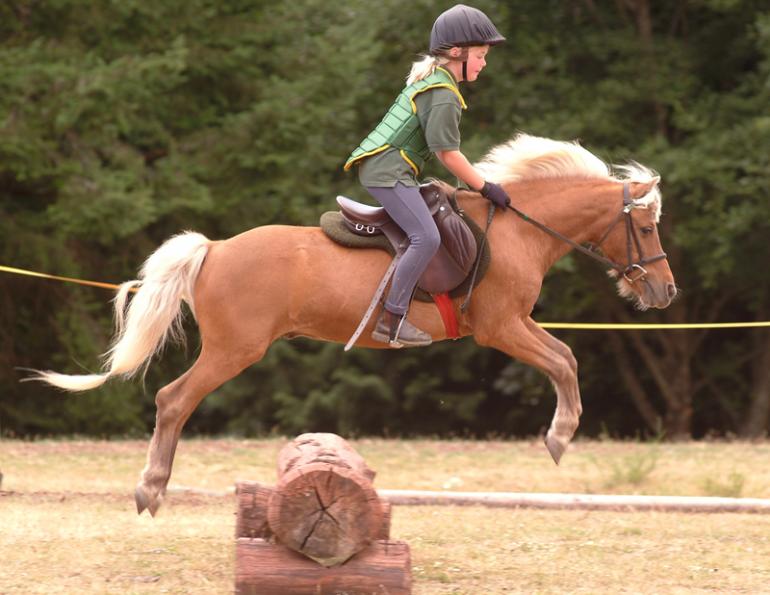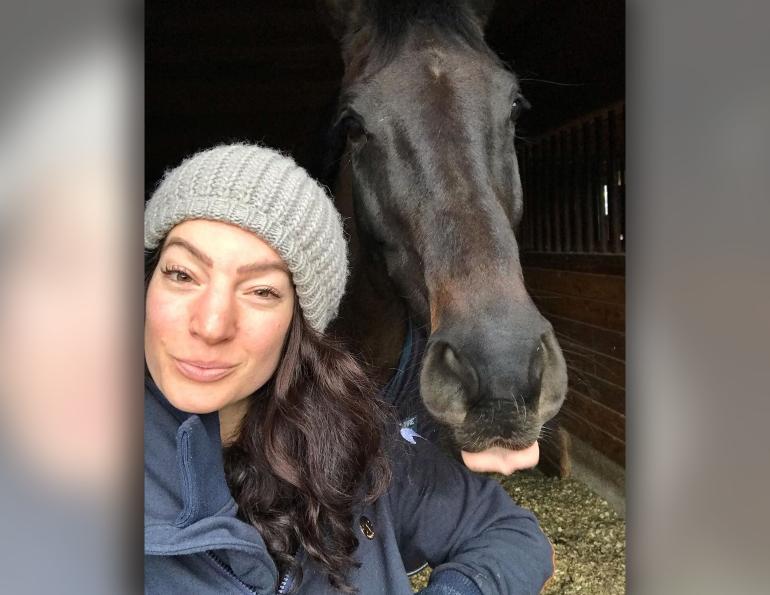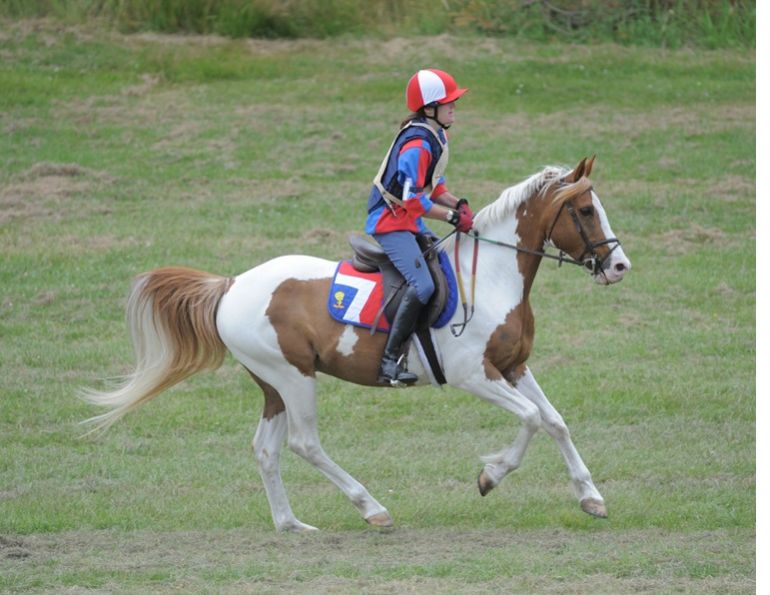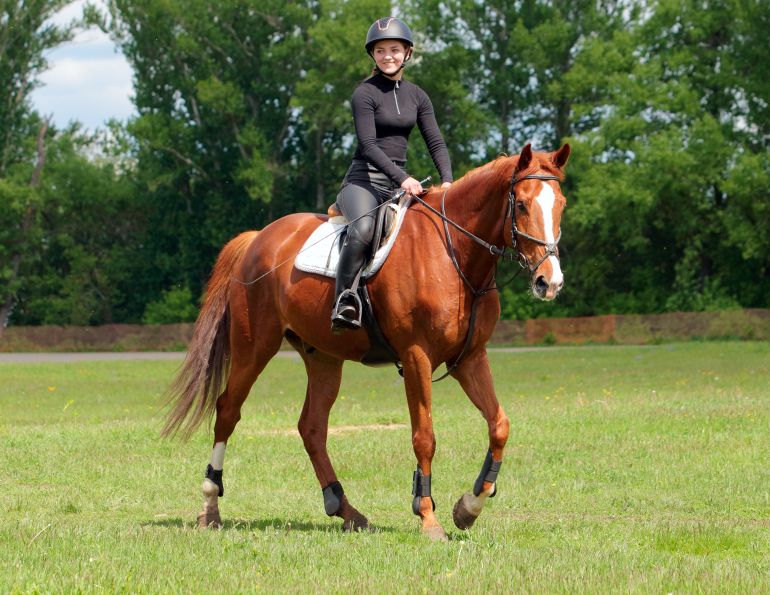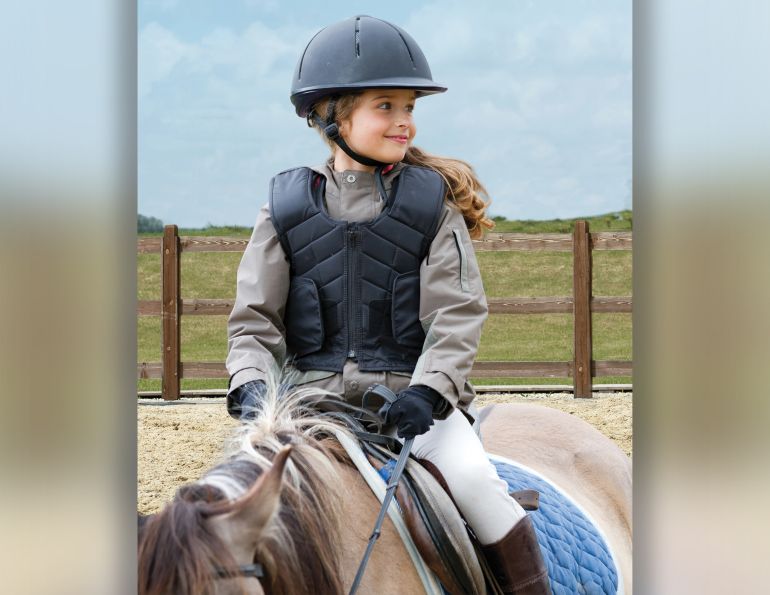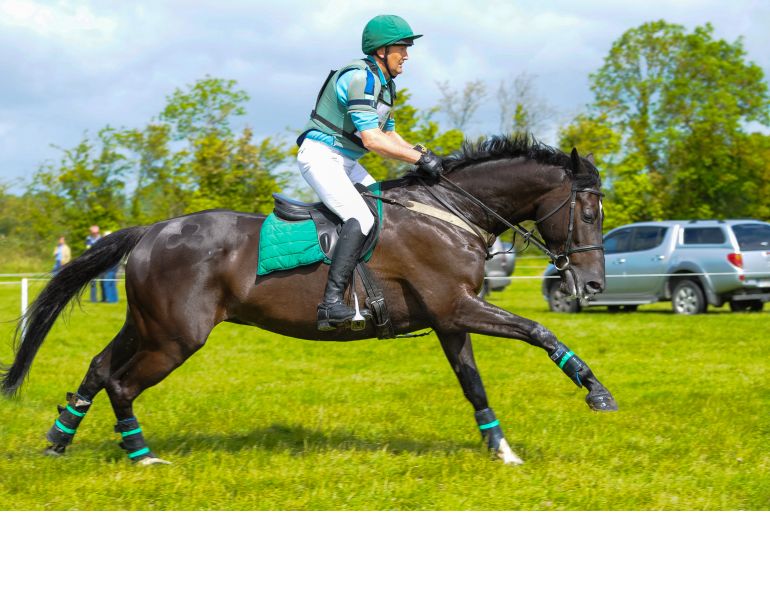By Heather Sansom
I get asked frequently about exercises that would be suitable for children and youth. Clients want to know how to help their kids avoid injury, develop as athletes, and even leverage a child’s interest in riding to inspire more activity in general. At a Pony Club clinic I taught this spring, the emphasis was on fun as I helped about 20 kids ranging from ages seven to seventeen understand basic cardiovascular conditioning, strengthening exercises, and stretches. Luckily for me, they came to my part of the clinic after their session on conditioning their ponies for combined training events; having just learned about principles, practices, and concepts for conditioning their horses, it was easier for them to understand similar ideas for their own fitness.
Clearly, each age group has different physical requirements and limitations. The new Sport Canada Long Term Athletic Development (LTAD) guidelines which will be implemented through Equine Canada programs emphasize that children’s programs should focus on fun, development (physical and mental), and wellness, and the importance of spending significantly more time training than competing.
General sport conditioning guidelines indicate that children under 14 should be introduced to the widest variety of activities without too much specialization. Specialization begins to occur through the teens, and it is not until the later teens and twenties that training is highly focused.
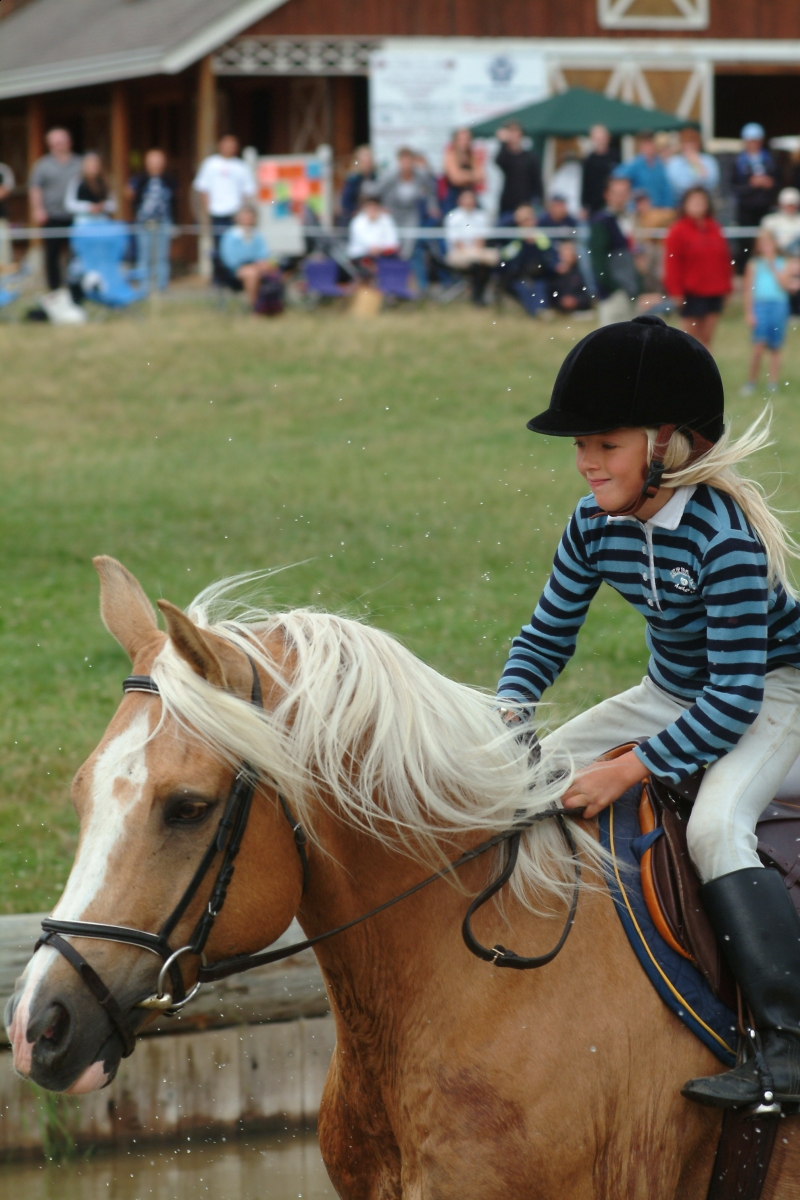
A child’s physical activity should focus on physical and mental development programs, wellness, and most of all, fun! Photo: Robin Duncan Photography
The guidelines affect a child’s development both as a rider and as an athlete in general. If you have children in other sports, you will notice a close mapping between their activities in those sports and the LTAD stages. As riders, younger children are best introduced to as wide a variety of equestrian disciplines as possible. There is plenty of time for them to specify as they mature and start to show clear strengths and tendencies. In the meantime, fostering a healthy sportsmanship and leadership attitude, and other qualities such as patience and self-discipline early on, will provide them with psychological tools to excel under pressure later in life. Many good riders break down under pressure as adults. Also, should your child hit the teenage years and abandon horses altogether, your investment in their riding will still bring dividends in other areas of their life.
Off-horse cross-training at this stage could be as simple as keeping your child active in a couple of other sports or activities, without performing specific exercises unless there is clear remedial need. When selecting cross-training methods, it’s important to keep skills in mind which are directly transferrable to riding. Some skills which can be developed fairly naturally in children but are much harder for relatively unathletic adults include cardiovascular stamina, muscle development, flexibility, body awareness, proprioceptive ability (kinetic and spatial awareness and coordination), and balance.
Suitable exercise for young riders in stages one and two (under 12) might include activities such as skating, ballet or gymnastics (which develop balance, flexibility, and core strength), or hockey, track, and soccer (which develop cardio-vascular and muscle development, and body awareness). Children under 12 should not be using weights or doing a lot of repetitious exercise. They can, however, do body-weight exercises, and exercises with stretch bands as long as they do not over train. They can also learn stretches, and develop the habit of stretching before and after riding and before each athletic activity. Habits developed at this stage will be likely to shape patterns of behaviour and training well into adulthood.
Areas that riders need to stretch in particular include the hip flexors, adductors (inner thigh), hamstrings, shoulders, and chest. If your child is doing sports requiring speed or power, they will need to spend extra time stretching so that muscle tightness from these sports does not influence poor riding posture. Children at this age are generally flexible and balanced, but any imbalance or inflexibility in riding at this time will contribute to development of muscle memory for incorrect and even unsafe riding posture. The more flexible and well balanced your child is in the saddle, and the more aware of their limbs, the less likely that they will be injured when the inevitable riding accidents occur.

Stretching for up to 15 minutes a day can loosen tight muscles and ligaments and lead to better balance.
With teens, body image is often a huge issue. This is an excellent time in your child’s life to develop an attitude and self-image centered around athletic ability, rather than weight or body shape. Stretching daily should be encouraged, especially before and after a ride. Also, cardiovascular and strength training activities performed at least twice a week for a minimum of 15 minutes per workout will be of great benefit. Place emphasis on developing ability for riding. Bodyweight and stretch band exercises which can be done anywhere are a great idea because they’ll be more likely to be done, and you don’t have to add “drive to gym” to your hectic weekly schedule.
If your teen is very involved in sport or body-building, watch out for tight hamstrings and hips, and tight upper body muscles. Large and bulky muscles are not desirable for riding, and it’s important to keep very flexible hips and back to absorb the horse’s motion effectively. Tight muscles are usually injured first, and tight muscles and ligaments can place undue strain on joints, or result in joint strain or injury when placed under sudden demand. Activities which require a high degree of body awareness and that create balanced muscular strength, flexibility, and stamina such as skating, dance, and gymnastics are excellent cross-training for riding. If your child will not be involved in organized classes or sports, encourage private fitness practice which includes a balance of cardiovascular, strengthening, and stretching activities.
Core strength at this stage is important for males and females for both posture and injury prevention. Girls should be encouraged to develop strength in the shoulder area in particular, since they do not come by it naturally. Strong shoulders contribute to better riding by keeping hands light. Arm strength is also important when dealing with incidents such as horse misbehavior on the end of a lead.
Some key areas of focus according to discipline are:
Jumping: Balanced quadriceps and hamstring strength, back and shoulder strength, balance, and cardio.
Dressage: Flexibility in hip flexors, adductors and hamstrings, balance, body awareness, shoulder strength and core strength (back, obliques and abs).
Reining: Cardio, core (especially back) and shoulder strength (especially rotator cuff), flexibility in hip flexors and adductors.
Working Western disciplines: More cardio, rotational power, shoulder strength.
Polo: Shoulder strength, rotational power exercises similar to tennis and golf, inner and outer thigh, cardio, major attention to core work, especially including twists.
Cross-country jumping: Similar to polo and jumping, with high degree of cardiovascular ability.
Endurance/Competitive Trail: Muscular stamina in legs, back, and shoulders, and attention to cardiovascular ability. Body balance is particularly important given the length of time the horse may have to carry a crooked rider.
Contrary to popular belief, riding is not enough exercise to keep you fit. Riding can be a wonderful part of an active lifestyle which keeps you healthy. However, like any other sport, the demands placed on the body by riding create muscular imbalance.
Without appropriate stretching and strength training for the opposing muscles groups (which aren’t used as much when actually riding), the rider will create muscular imbalance and even structural issues which will later require attention from a chiropractor, massage therapist or even physiotherapist. Stretching is a wonderful daily practice for young riders of all ages, and will help prevent injury as well as repetitive strain issues.
LTAD Stages
1. Active Start (0-6 yrs) — Activity is primarily play.
2. Learning to Train (8-11 yrs girls, 9-12 yrs boys) — Sports skills introduced, activity still fun, and programs general.
3. Training to Train (11-15 yrs girls, 12-16 yrs boys) — Based on growth spurt, focus more on skill training and physical development.
4. Training to Compete (15-21 yrs females, 16-23 yrs males) — Specialization begins, training can be higher volume and intensity.
5. Training to Win (18+ yrs females, 19+ yrs males) — Training is focused more intently on winning at a high level.
To read more by Heather Sansom on this site, click here.
Main photo: Robin Duncan Photography - Fitness cross-training will help your child become a stronger, more balanced rider, and help to prevent injury.



